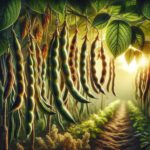Introduction to Bean Cultivation
Beans (Phaseolus vulgaris) are one of the most important crops in agriculture, being a key source of protein and nutrients in many diets around the world. Its cultivation is diverse and adapts to a wide range of climatic and soil conditions. This article provides a detailed guide on the agronomic practices necessary for bean crop management, from soil preparation to harvest and post-harvest handling, with the goal of optimizing yield and product quality.
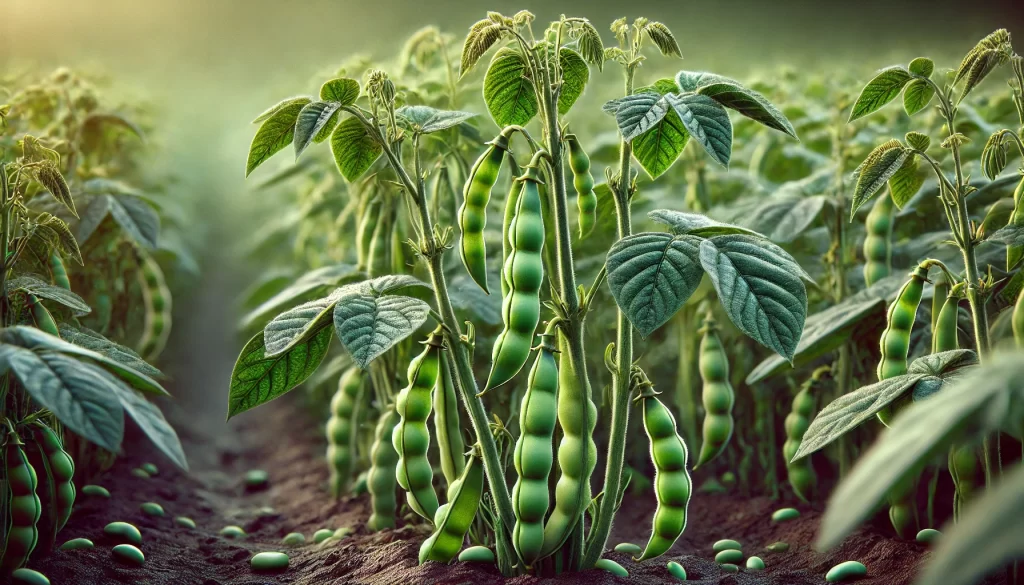
Site Selection and Soil Preparation
Ideal Climatic Conditions
Beans thrive in temperate and warm climates, with optimal temperatures ranging between 18°C and 25°C. Although drought-tolerant, beans prefer conditions where moisture is available during vegetative growth and flowering. Frost can severely damage plants, so it is crucial to avoid planting during periods of low temperatures.
Soil Selection
Beans adapt well to a variety of soils, but sandy loam or loamy soils, well-drained and rich in organic matter, are the most suitable. A soil pH between 6.0 and 7.5 is ideal. It is important to avoid soils with waterlogging problems, as they can cause root diseases.
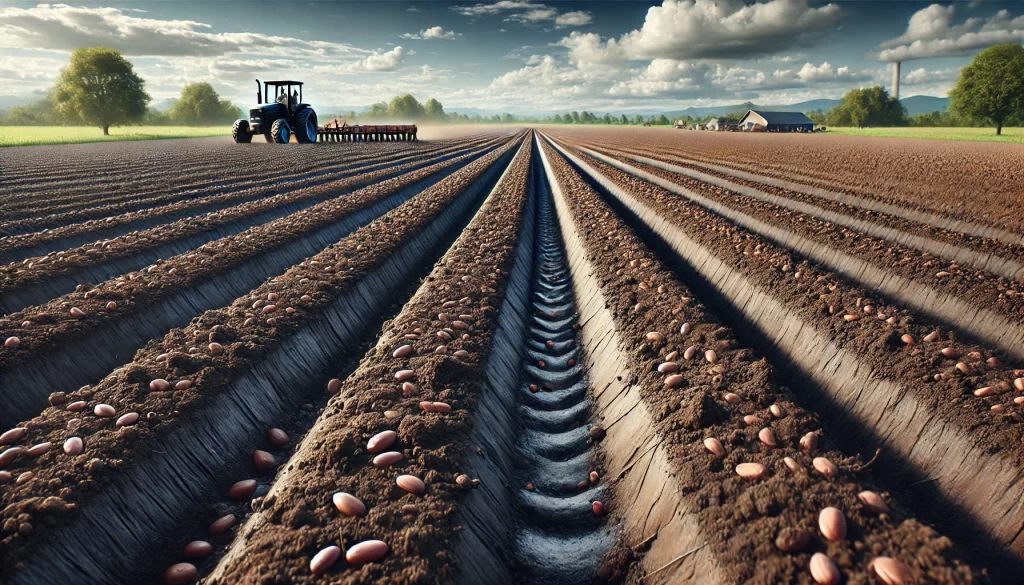
Soil Preparation
- Deep Tillage: Perform deep tillage to improve soil structure and promote aeration and drainage.
- Incorporation of Organic Matter: Add well-decomposed compost or manure to increase soil fertility and improve its water retention capacity.
- Proper Drainage: Ensure good drainage to avoid waterlogging, which can be detrimental to bean plant development.
Bean Planting and Sowing
Sowing Methods
Beans are sown directly in the field, facilitating quick establishment and plant development. Depending on the variety and type of bean, planting distances may vary.
Seed Preparation
- Seed Selection: Use certified and disease-free seeds to ensure uniform germination and good yield.
- Seed Treatment: Seeds can be treated with fungicides and rhizobium inoculants to improve germination and nitrogen fixation.
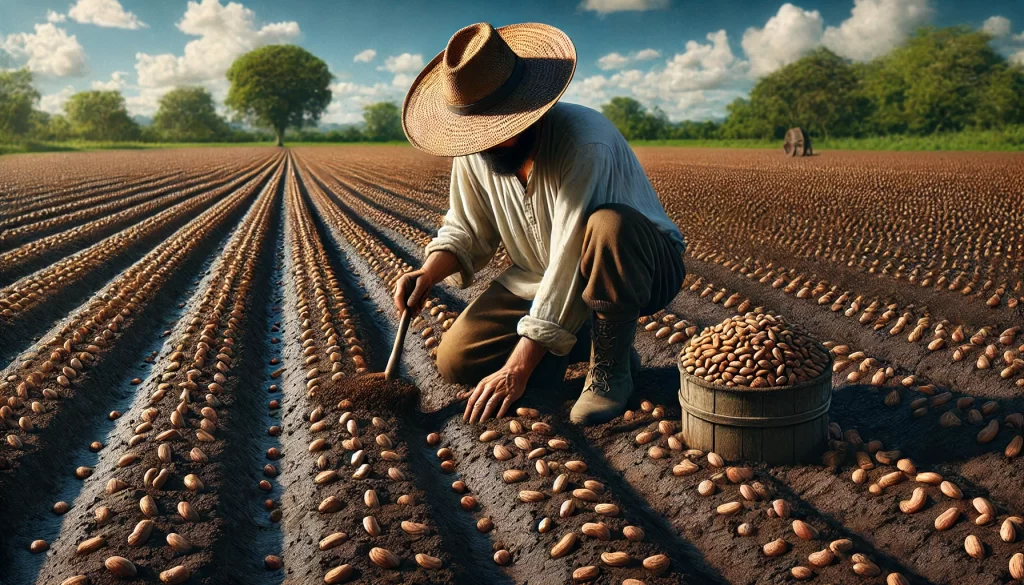
Direct Sowing
- Sowing Depth: Seeds should be sown at a depth of 2 to 5 cm, depending on soil texture and climatic conditions.
- Spacing: A common spacing is 10 to 15 cm between plants and 50 to 70 cm between rows, depending on the variety and management practices.
Sowing Season
Sowing should be done when the risk of frost has passed and the soil is warm enough to promote rapid germination. In general, sowing is done at the beginning of the rainy season in tropical regions or in spring in temperate zones.
Irrigation and Water Management
Water Requirements for Beans
Irrigation is crucial for bean development, especially during germination, flowering, and pod filling. Water requirements vary depending on the growth stage:
- Germination and Establishment: Moderate irrigation to ensure uniform germination and the establishment of strong seedlings.
- Vegetative Growth: Maintain constant irrigation to promote vigorous plant growth.
- Flowering and Pod Filling: Provide adequate irrigation to ensure the formation of full, high-quality pods.
Irrigation Systems
- Drip Irrigation: It is the most efficient system for bean cultivation, as it provides water directly to the root zone, minimizing evaporation losses and ensuring efficient water use.
- Sprinkler Irrigation: Suitable for large areas, but it should be carefully managed to avoid excessive wetting of leaves, which could promote the appearance of diseases.
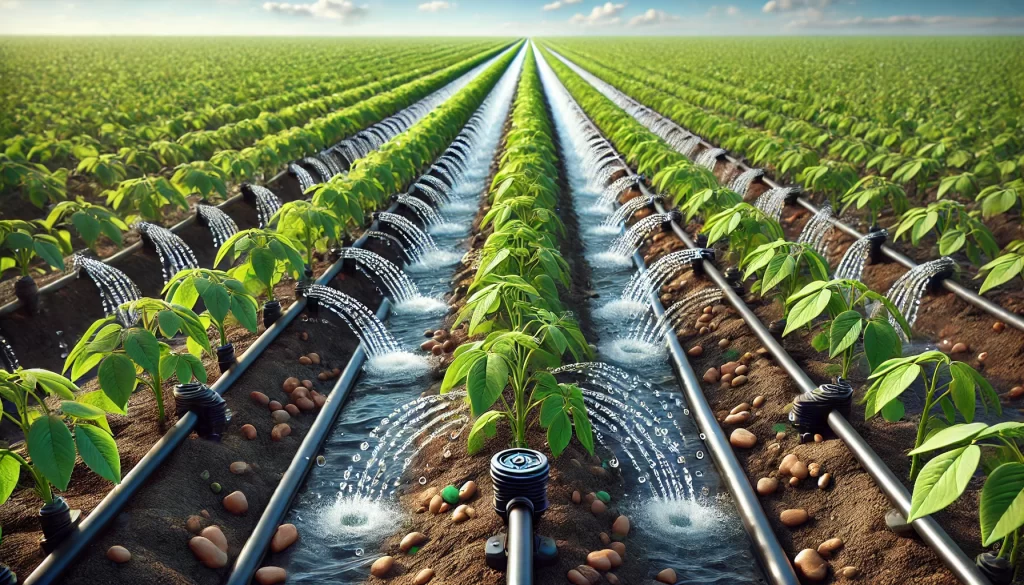
Fertilization of Bean Crops
Nutritional Requirements
Beans, being a legume, can fix atmospheric nitrogen through a symbiosis with rhizobium bacteria, reducing their dependency on nitrogen fertilizers. However, a balanced fertilization plan is essential to ensure optimal yield.
- Phosphorus (P): Crucial for root development and pod formation.
- Potassium (K): Improves disease resistance and pod quality.
- Micronutrients: Zinc, iron, and molybdenum are important for overall plant health and nitrogen fixation.
Fertilization Plan
- Base Fertilization: Apply phosphorus and potassium before sowing to prepare the soil.
- Topdressing Fertilization: Make additional applications of phosphorus and potassium during the crop cycle, adjusting the doses according to soil analysis and plant development.
- Seed Inoculation: Inoculate seeds with rhizobium bacteria before sowing to improve nitrogen fixation.
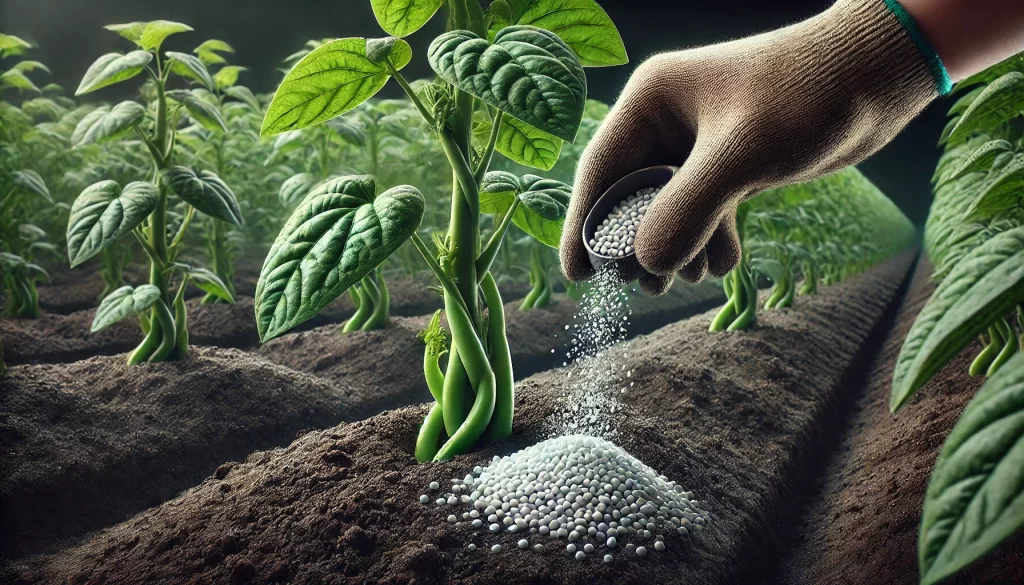
Pest and Disease Management
Common Pests
Pest management is essential to maintain the health of bean plants and ensure the production of high-quality grains. The most common pests include:
- Aphids: Affect young shoots and can transmit viral diseases.
- Bean Weevil (Acanthoscelides obtectus): Affects stored grains, reducing their quality and commercial value.
Control Strategies
- Regular Monitoring: Regularly inspect plants to detect pests in a timely manner.
- Biological Control: Introduction of natural predators such as lacewings and parasitic wasps.
- Insecticide Application: Use specific products following technical recommendations to minimize environmental impact and avoid resistance.
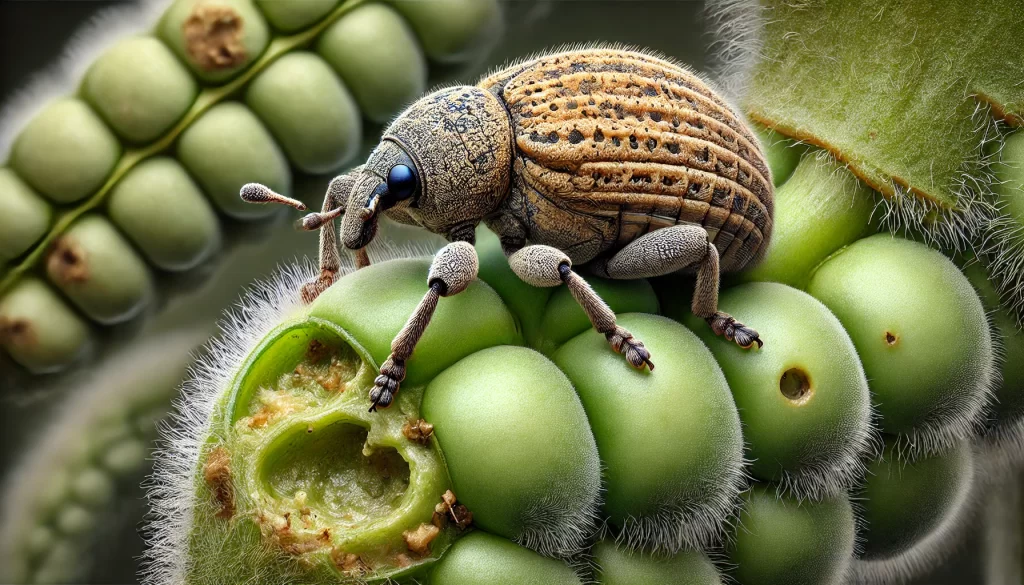
Common Diseases
Diseases can significantly affect the productivity of bean crops. The most common include:
- Anthracnose (Colletotrichum lindemuthianum): Causes lesions on stems, leaves, and pods, reducing yield and quality.
- Powdery Mildew (Erysiphe polygoni): A fungus that affects leaves, forming a white layer that reduces photosynthesis and plant vigor.
Control Strategies
- Sanitary Management: Remove affected plant parts to reduce the spread of diseases.
- Fungicide Use: Apply preventive and curative fungicides under favorable conditions for disease development.
- Crop Rotation: Avoid planting beans in the same area for several consecutive years to reduce disease pressure.
Harvest and Post-Harvest Management
Maturity Indicators
Beans are harvested when the pods have reached physiological maturity, which can be determined by:
- Pod Color: Dry pods change color from green to yellow or brown, depending on the variety.
- Pod Sound: When shaking dry pods, the grains should rattle, indicating they are ready for harvest.
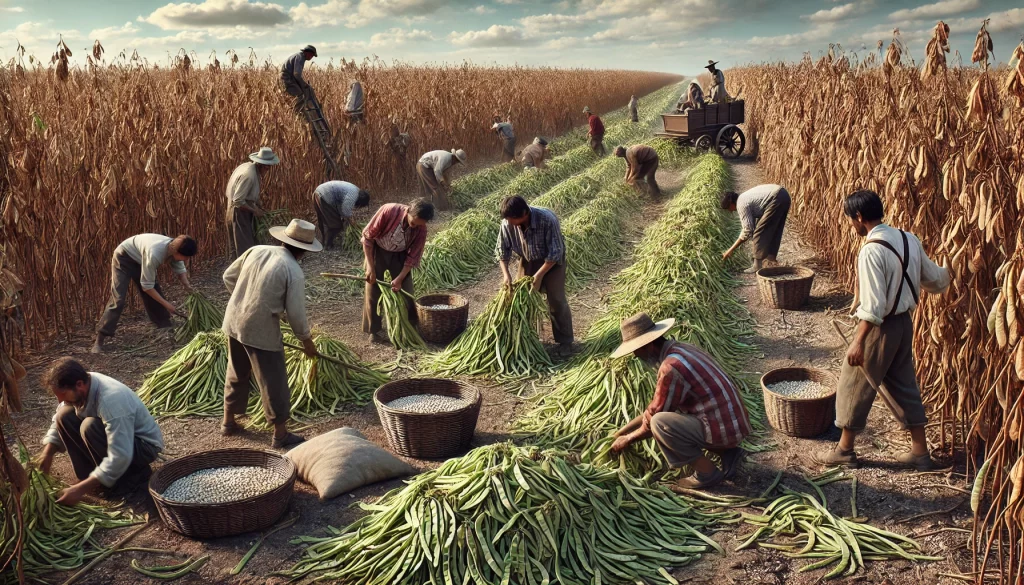
Harvesting Techniques
Harvesting can be done manually or mechanically, depending on the size of the cultivated area. It is important to avoid harvesting in high humidity conditions to prevent deterioration of pods and grains.
Post-Harvest Management
Post-harvest management is crucial to maintain the quality of bean grains. Recommended practices include:
- Drying: Dry the grains to a safe moisture content, generally around 12%, to avoid mold and quality loss.
- Cleaning and Grading: Clean and grade the grains to remove impurities and ensure uniform quality.
- Storage: Store the grains in dry, ventilated conditions to preserve their quality and prevent pest attacks.
 AgronoBlog – Agriculture Blog
AgronoBlog – Agriculture Blog 